 The Siege of Turin was undertaken by the Duke of Orléans
The Siege of Turin was undertaken by the Duke of Orléans  and Marshal de la Feuillade
and Marshal de la Feuillade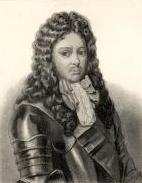 between May and September 1706 against the Savoyard city of Turin during the War of the Spanish Succession.
between May and September 1706 against the Savoyard city of Turin during the War of the Spanish Succession. Unable to break down Turin's defences or obtain the city's surrender, the French army was attacked September 7 by an Imperial relief column under Prince Eugene of Savoy
Unable to break down Turin's defences or obtain the city's surrender, the French army was attacked September 7 by an Imperial relief column under Prince Eugene of Savoy and the Duke of Savoy and routed at the Battle of the Stura.
and the Duke of Savoy and routed at the Battle of the Stura. The siege of Turin was broken and the withdrawal of French forces from northern Italy began. Coupled with its twin disaster in Flanders—the destruction of a French army at theBattle of Ramillies—
The siege of Turin was broken and the withdrawal of French forces from northern Italy began. Coupled with its twin disaster in Flanders—the destruction of a French army at theBattle of Ramillies— Turin marked 1706 as the annus horribilis for Louis XIV of France
Turin marked 1706 as the annus horribilis for Louis XIV of France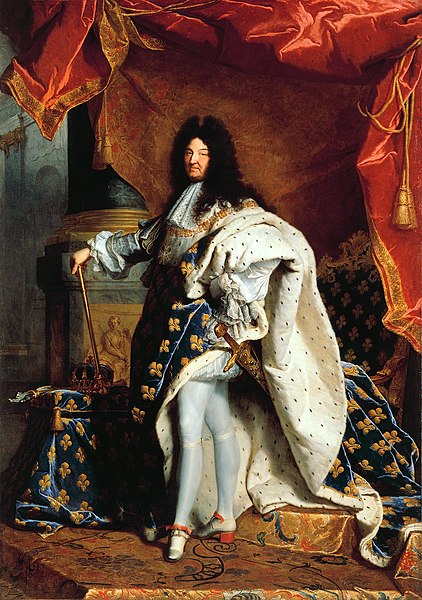 At the outbreak of the conflict, Victor Amadeus, backed by his cousin Eugene, generalissimo of the Imperial troops, had taken the risk to side
At the outbreak of the conflict, Victor Amadeus, backed by his cousin Eugene, generalissimo of the Imperial troops, had taken the risk to side  above foundry
above foundry
with Austria's Habsburgs since they were the sole power in Europe that could grant his state a total independence after a final victory. However, in case of defeat, Piedmont and Savoy would be wiped off the European maps.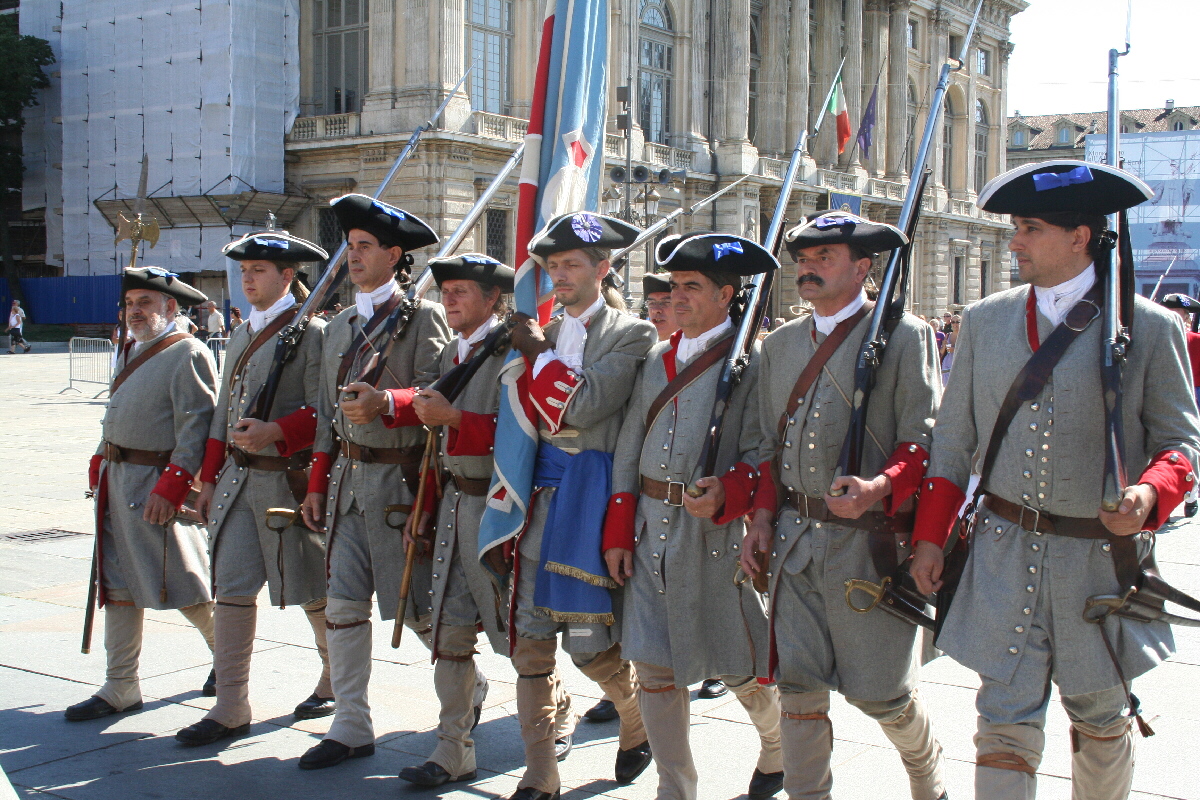
King Louis XIV of France, allied with Spain, replied by invading first Savoy and then Piedmont itself. As the 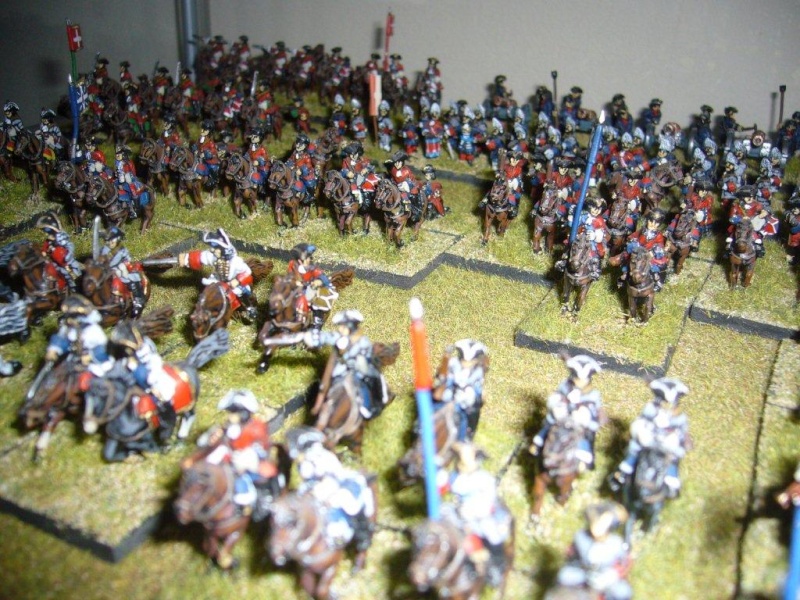 Spanish armies occupied Lombardy, Piedmont found itself surrounded from every side. Attacked by three armies, the Savoyards lost Susa
Spanish armies occupied Lombardy, Piedmont found itself surrounded from every side. Attacked by three armies, the Savoyards lost Susa ,Vercelli
,Vercelli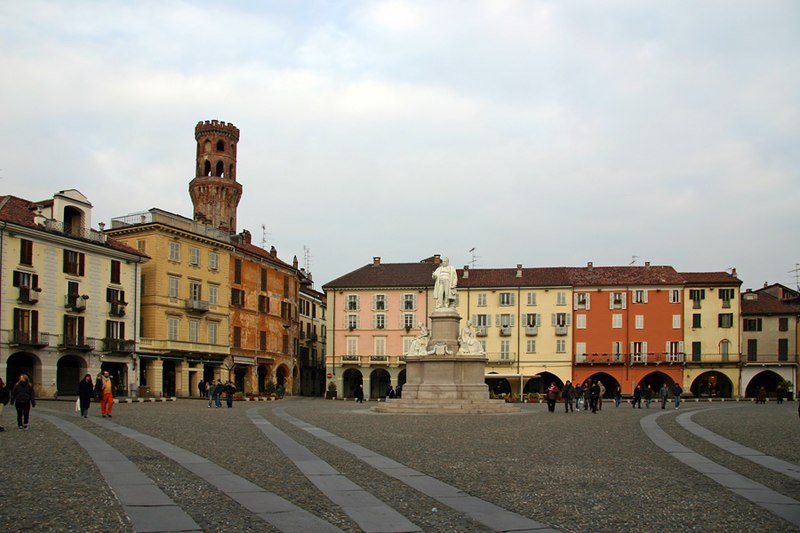 , Chivasso
, Chivasso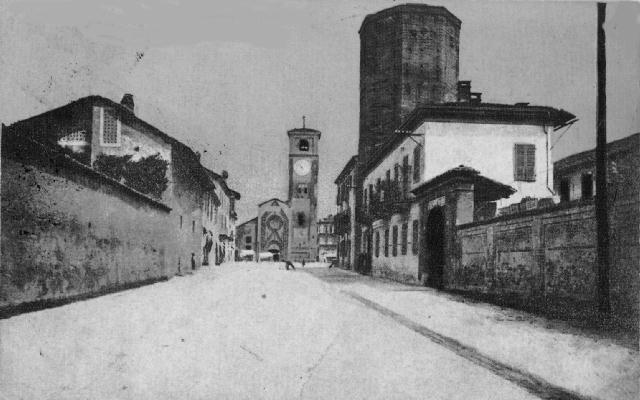 , Ivrea
, Ivrea and Nice (1704). The last stronghold was the Citadel of Turin, a fortification built in the mid-16th century.
and Nice (1704). The last stronghold was the Citadel of Turin, a fortification built in the mid-16th century.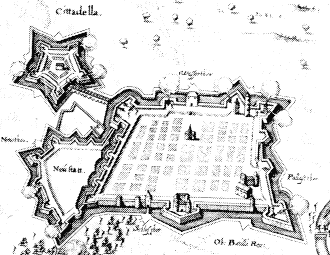
 Spanish armies occupied Lombardy, Piedmont found itself surrounded from every side. Attacked by three armies, the Savoyards lost Susa
Spanish armies occupied Lombardy, Piedmont found itself surrounded from every side. Attacked by three armies, the Savoyards lost Susa ,Vercelli
,Vercelli , Chivasso
, Chivasso , Ivrea
, Ivrea and Nice (1704). The last stronghold was the Citadel of Turin, a fortification built in the mid-16th century.
and Nice (1704). The last stronghold was the Citadel of Turin, a fortification built in the mid-16th century.
In August 1705 the French-Spanish armies were ready to attack, but De la Feuillade deemed his troops insufficient and waited for reinforcements. This choice turned out to be wrong, as it allowed the Piedmontese to fortify the city up to the neighbouring hills and to prepare for a long siege.In May, the Franco-Spanish army approached Turin with more than 40,000 men. Sébastien de Vauban,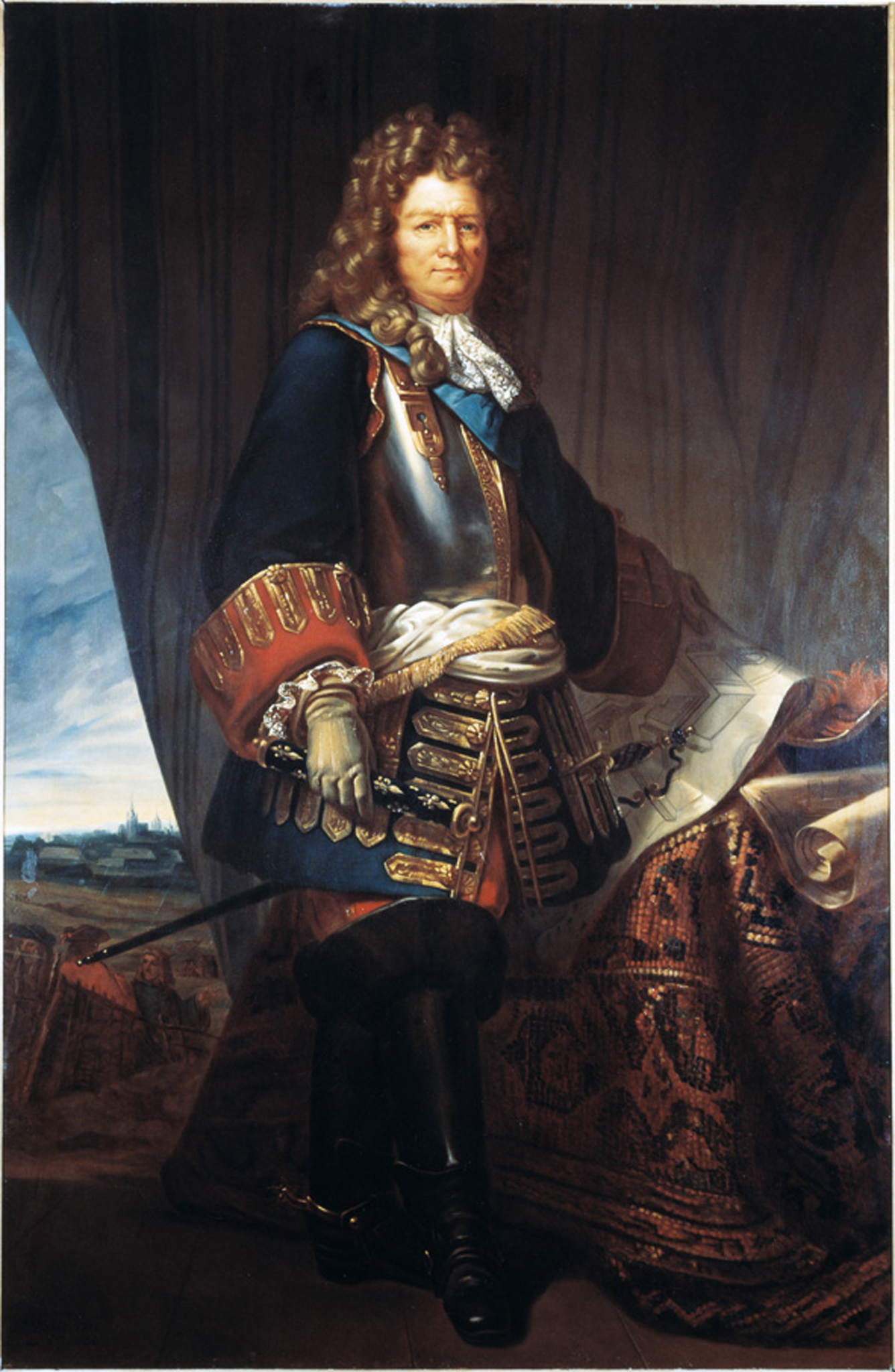 Marshal of France and expert of siege techniques, volunteered for the campaign but was dismissed due to his age. Vauban persisted in counselling the French command, proposing a side assault to the city and pointing out that the wide net of countermine galleries set by the defenders would present a tenacious obstacle to any other operation. But La Feuillade had different ideas and, dismissing Vauban's counsel, ordered his 48 military engineers to draw up plans for the excavation of a long series of trenches. Old Vauban vocally condemned La Feuillade's methods from Paris, publicly offering to have his throat cut if the French succeeded in taking Turin on La Feuillade's chosen point of attack.Digging began May 14, although La Feuillade's lines never fully surrounded Turin. The siege began in June and was pursued for three months against dogged resistance. The besieged, supported by the active participation of the population to the battle, offered a strenuous defence, inflicting heavy losses on the attackers.the box below could easily be painted up for turin
Marshal of France and expert of siege techniques, volunteered for the campaign but was dismissed due to his age. Vauban persisted in counselling the French command, proposing a side assault to the city and pointing out that the wide net of countermine galleries set by the defenders would present a tenacious obstacle to any other operation. But La Feuillade had different ideas and, dismissing Vauban's counsel, ordered his 48 military engineers to draw up plans for the excavation of a long series of trenches. Old Vauban vocally condemned La Feuillade's methods from Paris, publicly offering to have his throat cut if the French succeeded in taking Turin on La Feuillade's chosen point of attack.Digging began May 14, although La Feuillade's lines never fully surrounded Turin. The siege began in June and was pursued for three months against dogged resistance. The besieged, supported by the active participation of the population to the battle, offered a strenuous defence, inflicting heavy losses on the attackers.the box below could easily be painted up for turin Fighting continued during the whole summer of 1706On June 17 Victor Amadeus left Turin to meet Eugene, who was marching from the Trentino with the Austrian troops under
Fighting continued during the whole summer of 1706On June 17 Victor Amadeus left Turin to meet Eugene, who was marching from the Trentino with the Austrian troops under his command. The heroic deeds of the defenders, including the famous sacrifice of Pietro Micca
his command. The heroic deeds of the defenders, including the famous sacrifice of Pietro Micca  who had himself explode in a gallery together with a French party in order to save the citadel,
who had himself explode in a gallery together with a French party in order to save the citadel,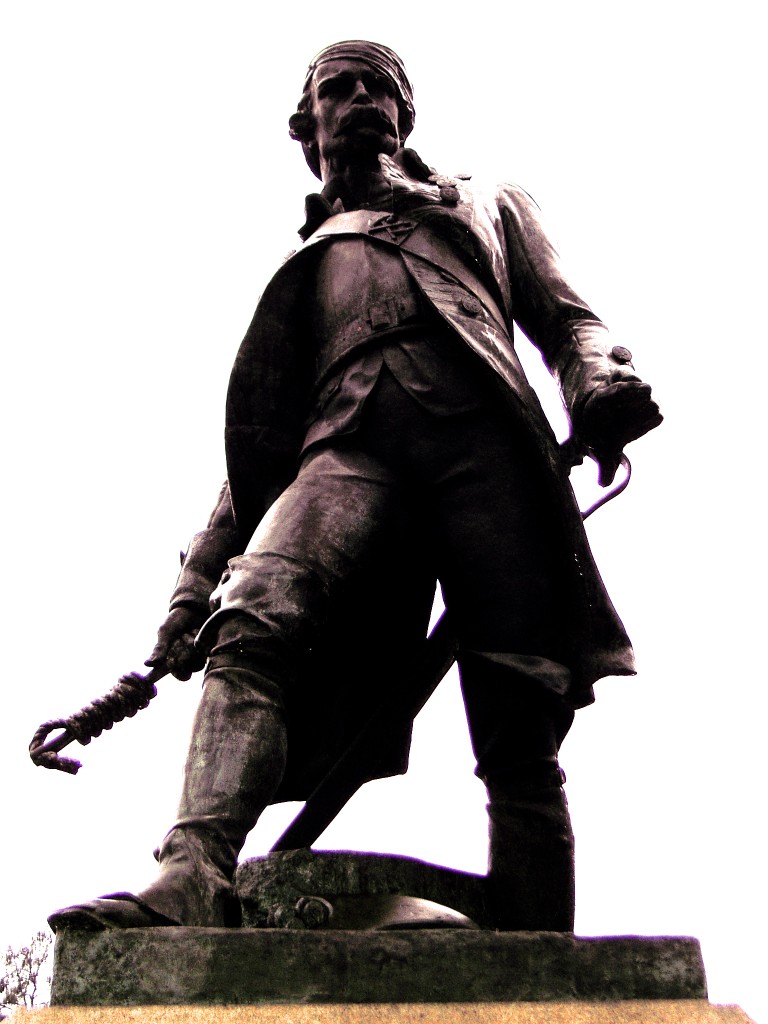 seemed however in vain at this point, with the city totally surrounded and heavily shelled, and the French lines nearing the first bastions of the citadel.
seemed however in vain at this point, with the city totally surrounded and heavily shelled, and the French lines nearing the first bastions of the citadel.
 Marshal of France and expert of siege techniques, volunteered for the campaign but was dismissed due to his age. Vauban persisted in counselling the French command, proposing a side assault to the city and pointing out that the wide net of countermine galleries set by the defenders would present a tenacious obstacle to any other operation. But La Feuillade had different ideas and, dismissing Vauban's counsel, ordered his 48 military engineers to draw up plans for the excavation of a long series of trenches. Old Vauban vocally condemned La Feuillade's methods from Paris, publicly offering to have his throat cut if the French succeeded in taking Turin on La Feuillade's chosen point of attack.Digging began May 14, although La Feuillade's lines never fully surrounded Turin. The siege began in June and was pursued for three months against dogged resistance. The besieged, supported by the active participation of the population to the battle, offered a strenuous defence, inflicting heavy losses on the attackers.the box below could easily be painted up for turin
Marshal of France and expert of siege techniques, volunteered for the campaign but was dismissed due to his age. Vauban persisted in counselling the French command, proposing a side assault to the city and pointing out that the wide net of countermine galleries set by the defenders would present a tenacious obstacle to any other operation. But La Feuillade had different ideas and, dismissing Vauban's counsel, ordered his 48 military engineers to draw up plans for the excavation of a long series of trenches. Old Vauban vocally condemned La Feuillade's methods from Paris, publicly offering to have his throat cut if the French succeeded in taking Turin on La Feuillade's chosen point of attack.Digging began May 14, although La Feuillade's lines never fully surrounded Turin. The siege began in June and was pursued for three months against dogged resistance. The besieged, supported by the active participation of the population to the battle, offered a strenuous defence, inflicting heavy losses on the attackers.the box below could easily be painted up for turin Fighting continued during the whole summer of 1706On June 17 Victor Amadeus left Turin to meet Eugene, who was marching from the Trentino with the Austrian troops under
Fighting continued during the whole summer of 1706On June 17 Victor Amadeus left Turin to meet Eugene, who was marching from the Trentino with the Austrian troops under his command. The heroic deeds of the defenders, including the famous sacrifice of Pietro Micca
his command. The heroic deeds of the defenders, including the famous sacrifice of Pietro Micca  who had himself explode in a gallery together with a French party in order to save the citadel,
who had himself explode in a gallery together with a French party in order to save the citadel, seemed however in vain at this point, with the city totally surrounded and heavily shelled, and the French lines nearing the first bastions of the citadel.
seemed however in vain at this point, with the city totally surrounded and heavily shelled, and the French lines nearing the first bastions of the citadel.
On September 2 the two Savoyards analyzed the tactical situation from the hill of Superga, which commands Turin and the neighbouring area. While the defenders pushed back the last attack fuelled only by desperation, they decided to outflank the besiegers with the bulk of the Austrian army, including part of the cavalry,
While the defenders pushed back the last attack fuelled only by desperation, they decided to outflank the besiegers with the bulk of the Austrian army, including part of the cavalry, in the north-western part of the city, which was deemed the most vulnerable part of the Allied front. The manoeuvre succeeded and the Austrians managed to set up camp between the (above foundry)
in the north-western part of the city, which was deemed the most vulnerable part of the Allied front. The manoeuvre succeeded and the Austrians managed to set up camp between the (above foundry) Dora Riparia and the Stura di Lanzo rivers.
Dora Riparia and the Stura di Lanzo rivers.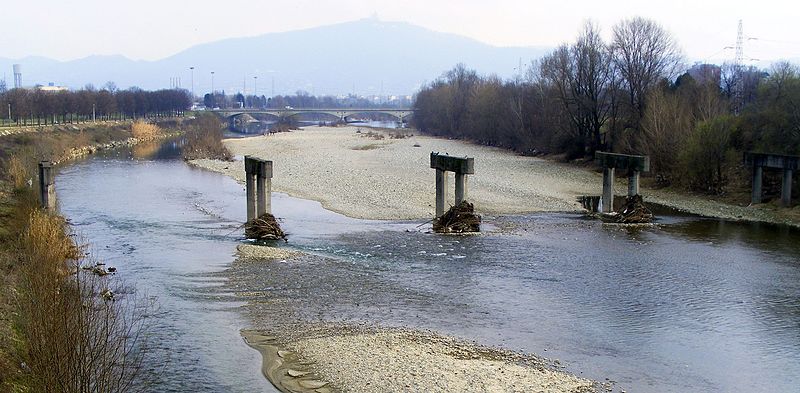 Eugene declared:
Eugene declared:
 in the north-western part of the city, which was deemed the most vulnerable part of the Allied front. The manoeuvre succeeded and the Austrians managed to set up camp between the (above foundry)
in the north-western part of the city, which was deemed the most vulnerable part of the Allied front. The manoeuvre succeeded and the Austrians managed to set up camp between the (above foundry) Dora Riparia and the Stura di Lanzo rivers.
Dora Riparia and the Stura di Lanzo rivers. Eugene declared:
Eugene declared:These men are already half defeated.
The final clash began at 10 AM on September 7 with an attack against the entire front of the besiegers. The Prussian infantry led by prince Leopold von Anhalt Dessau, after three failed attacks, was able to break the French right. The regiment La Marine ran out of ammunition and was no longer able to stop the Prussian infantry. Two attempts to relieve the pocket formed in this way were driven back and the Allied army began to collapse the French position. When Daun ordered the city's garrison to break out against the left wing of the French-Spanish army, it started to break up, with hundreds of soldiers drowning in the Dora Riparia in an extreme attempt to save their lives. The advance of the Allied army towards Pinerolo
Two attempts to relieve the pocket formed in this way were driven back and the Allied army began to collapse the French position. When Daun ordered the city's garrison to break out against the left wing of the French-Spanish army, it started to break up, with hundreds of soldiers drowning in the Dora Riparia in an extreme attempt to save their lives. The advance of the Allied army towards Pinerolo started in the early afternoon of the same day. The Duke of Marlborough wrote of the relief of Turin:
started in the early afternoon of the same day. The Duke of Marlborough wrote of the relief of Turin: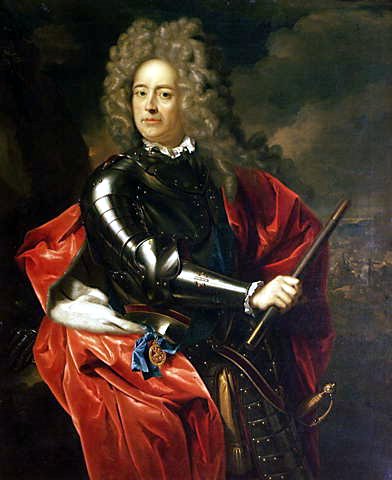
 Two attempts to relieve the pocket formed in this way were driven back and the Allied army began to collapse the French position. When Daun ordered the city's garrison to break out against the left wing of the French-Spanish army, it started to break up, with hundreds of soldiers drowning in the Dora Riparia in an extreme attempt to save their lives. The advance of the Allied army towards Pinerolo
Two attempts to relieve the pocket formed in this way were driven back and the Allied army began to collapse the French position. When Daun ordered the city's garrison to break out against the left wing of the French-Spanish army, it started to break up, with hundreds of soldiers drowning in the Dora Riparia in an extreme attempt to save their lives. The advance of the Allied army towards Pinerolo started in the early afternoon of the same day. The Duke of Marlborough wrote of the relief of Turin:
started in the early afternoon of the same day. The Duke of Marlborough wrote of the relief of Turin:
It is impossible to express the joy it has given me; for I not only esteem, but I really love that Prince [Eugene]. This glorious action must bring France so low, that if our friends could but be persuaded to carry on the war with vigour one year longer, we cannot fail, with the blessing of God, to have such a peace as will give us quiet for all our days.
Victor Amadeus and Eugene entered the liberated city and assisted a Te Deum issued to celebrate the victory. On the Superga Hill the Savoyard dynasty built a Basilica where, every September 7, a Te Deum is still held.

To the east, a French victory over a Hessian corps at Castiglione was not enough to regain initiative or to check the allied advance, and the French retreat from Turin effectively left the allies free to invade southern France. After the failed Siege of Toulon in the following year, no relevant military event took place on the Italian front until the peace of Utrecht.
in the following year, no relevant military event took place on the Italian front until the peace of Utrecht.
 in the following year, no relevant military event took place on the Italian front until the peace of Utrecht.
in the following year, no relevant military event took place on the Italian front until the peace of Utrecht.
No comments:
Post a Comment